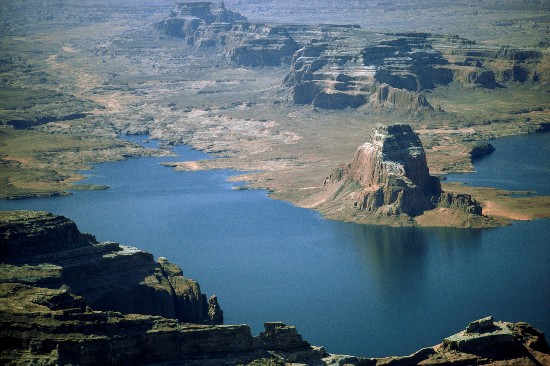In the last Earth Day posting on this blog site, the state of the atmosphere’s health was examined. But a health checkup for the planet that doesn’t look at the state of water would be incomplete. Hence, this is Part 2.
When seen from space, Earth appears to be inappropriately named. It would be apt to call our planet Ocean when you consider most of it is covered by water. Measuring the state of health of that water, whether salt, fresh, or ice is today’s subject.
On the website of the United Nations, it states “Water and climate change are inextricably linked. Climate change affects the world’s water in complex ways. From unpredictable rainfall patterns to shrinking ice sheets, rising sea levels, floods and droughts – most impacts of climate change come down to water.” The worsening floods, the shrinking of ice fields and sea ice, the rise in sea levels, and the increase in droughts and wildfires in terms of length and severity speak to a climate change-water link.
A Fresh and Salt Water Health Report
Oceans, lakes and rivers cover more than 70% of the planet. Beneath the land lie aquifers where additional water is accessed for agriculture, consumption and industrial use. What’s happening to all of this water is setting off alarm bells in the scientific community and with policymakers in government.
In the United States, rivers like the Colorado are running dry because of drought and overuse. The Great Salt Lake in Utah is vanishing as more water is diverted to agricultural and urban use. The Missippi-Missouri River system is seeing a rise in low water days because of less precipitation and over-exploitation with the impact on shipping palpable.
The Great Lakes bordering Canada and the United States have seen significant algae blooms that deplete oxygen from the water and contribute to a decline in fish populations and inhibit freshwater security for local cities and communities.
Outside of North America, the conditions aren’t much better.
- Globally, oceans are warming contributing to sea level rise.
- The ocean as a carbon sink is taking up more carbon dioxide (CO2) produced by human activity. As a result ocean pH levels are dropping with negative consequences for shellfish and crustaceans.
- Today, approximately 2 billion people globally lack safe drinking water. Nearly 4 billion are experiencing severe freshwater scarcity for at least part of every year.
- Terrestrial water storage tied up in the soil, winter snowpacks, and ice fields are in decline.
- Saltwater intrusion into coastal aquifers because of sea level rise is reducing freshwater access for people living close to the sea.
- Extensive and prolonged droughts with accompanying wildfires are causing a freshwater decline.
- As atmospheric temperatures rise, surface waters are getting warmer causing pathogens to spread.
- As water sources shrink, concentrations of human-produced pollutants are on the rise.
I’d say the Earth right now has a failing health report based on all of the above.
A Water Vapour Health Report
In our State of the Atmosphere report for Earth Day, our focus was on the rise in air temperatures and greenhouse gasses (GHGs). Water vapour is a GHG, but it is one we cherish unlike CO2, methane (CH4), nitrous oxides (NO2) and others.
As the atmosphere warms it increases its capacity to draw on surface water which creates water as a vapour. Increasing amounts of water vapour in the air sounds like a good thing for those suffering from persistent drought. But more water vapour in the air can lead to damaging consequences. What are some of these?
- Storms are noticeably increasing in intensity and frequency across the globe.
- Hurricanes, cyclones and typhoons are showing uncharacteristic new behaviours. They last longer and travel further. One recent cyclone crossed the Indian Ocean from off the coast of Australia to East and South Africa repeatedly pummeling the latter for days. It didn’t peter out until a month had passed.
- Seasonal monsoon rains recently turned deadly in Pakistan with the amounts of water so significant more than a third of the country flooded.
The state of water vapour appears to be in disequilibrium, another failing grade.
An Ice Health Report
I grew up in Canada where the Northwest Passage traverses the country’s northern archipelago. In the past, it has seldom been ice-free. Today, however, cruise ships cross the Passage in the summer months. And forecasts fifty years in the future have sea ice thinning to a point where the Passage will be ice-free for much of the year.
The Southern Ocean that rings Antarctica is the other major domain of sea ice. Here as well the ice pack is thinning which is affecting coastal ice shelves as warmer ocean water intrudes.
Destabilizing Antarctica’s ice shelves is of concern to climatologists with the continent currently losing an average rate of 150 billion tons of ice per year and forecasts for the future see that number rising.
Other locked-up ice in the Arctic’s northern islands includes the largest, Greenland. Surrounded by a warming North Atlantic, Greenland is seeing an even greater loss of ice than Antarctica, with up to 270 billion tons melting into the ocean and contributing to sea level rise.
Ice fields also are found at high elevations in mountain ranges that ring the planet. The importance of these ice fields cannot be underestimated since they provide water sources for most of the great rivers of the planet. The Himalayas, home to the largest alpine ice fields containing over 600 billion tons, have seen over the last four decades significant melting with some glaciers retreating at rates of tens of metres annually.
The ice health report is no better than the one for the oceans, lakes, rivers, aquifers, and atmosphere. Our water stewardship in the age of climate change gets a failing grade.
















